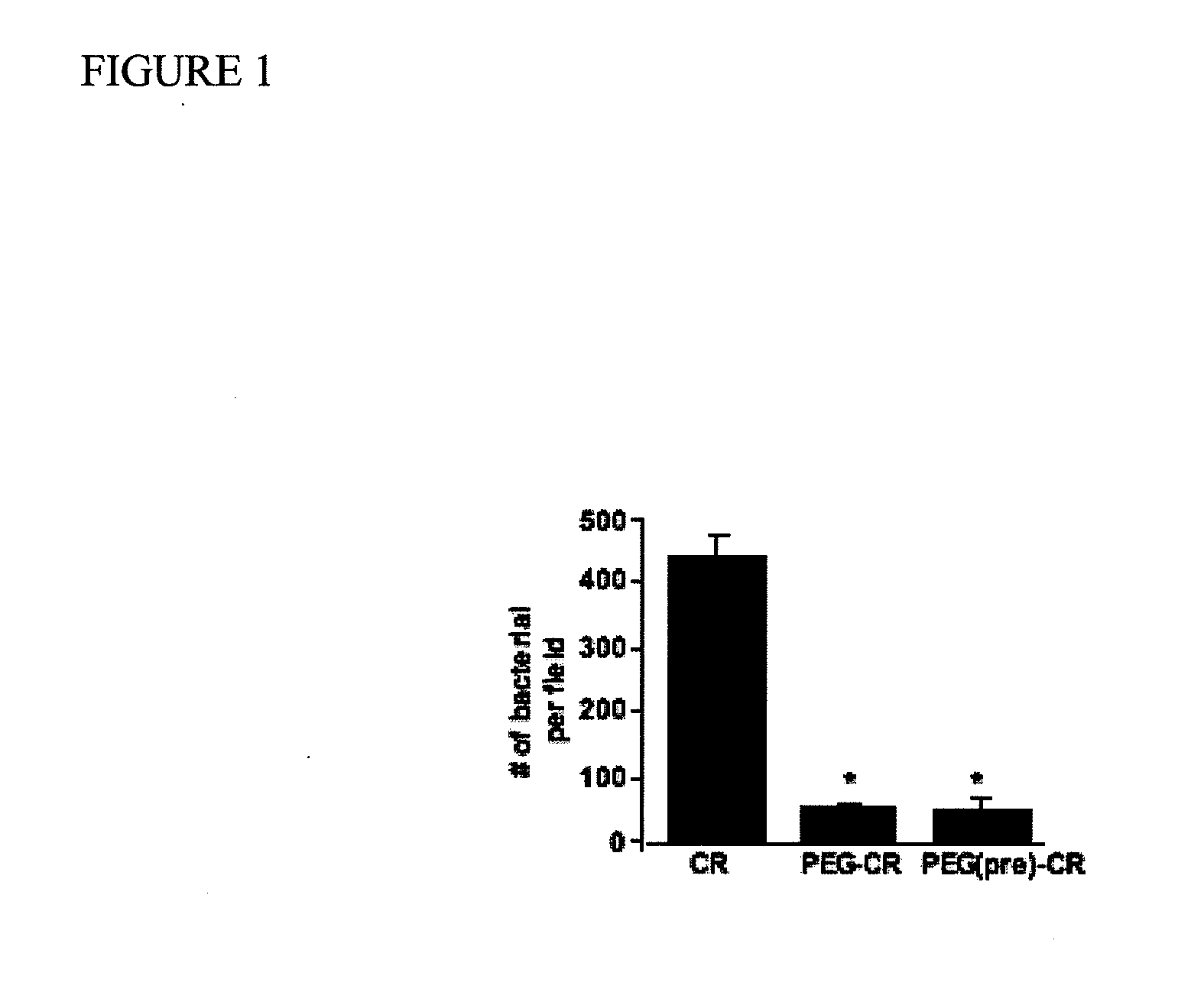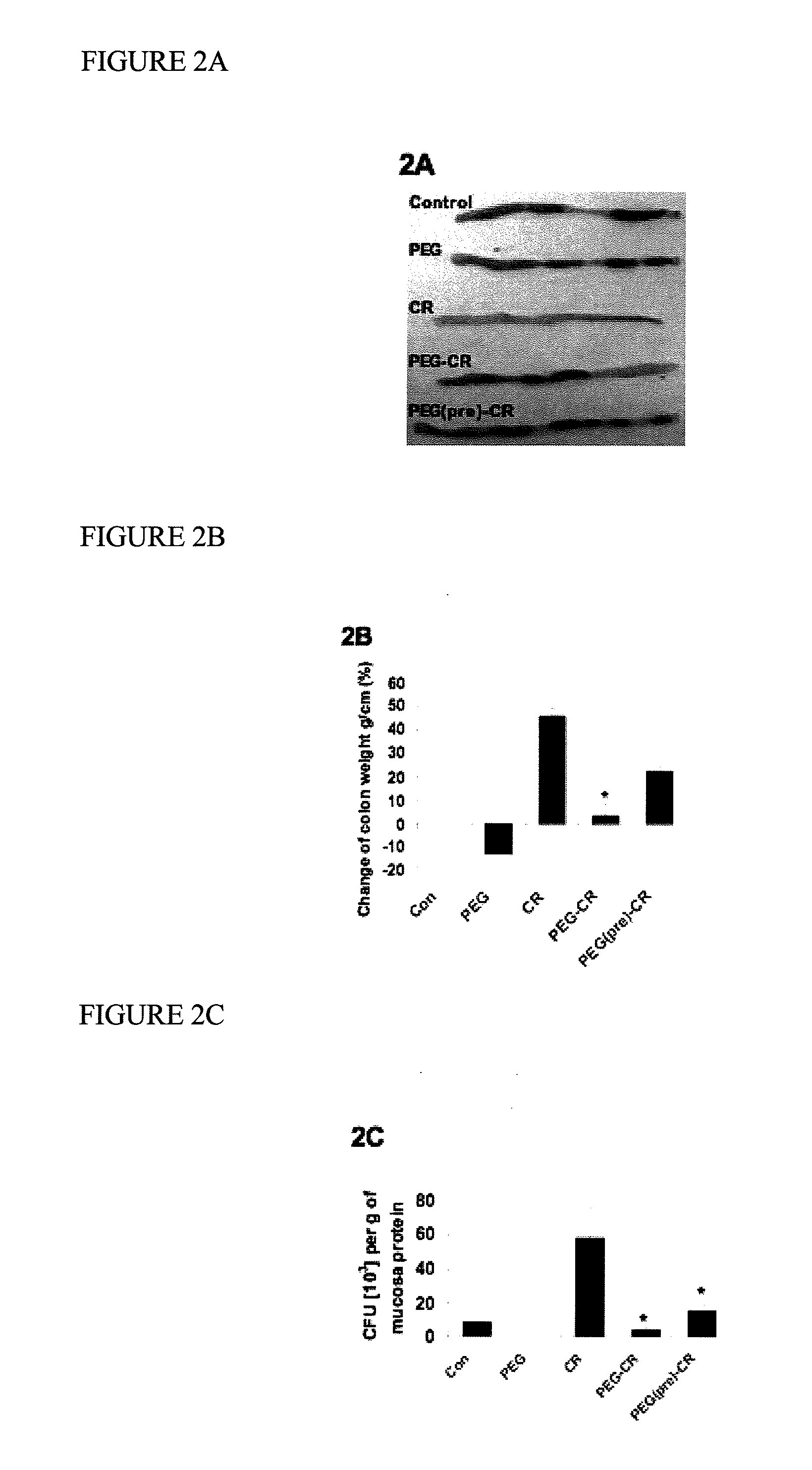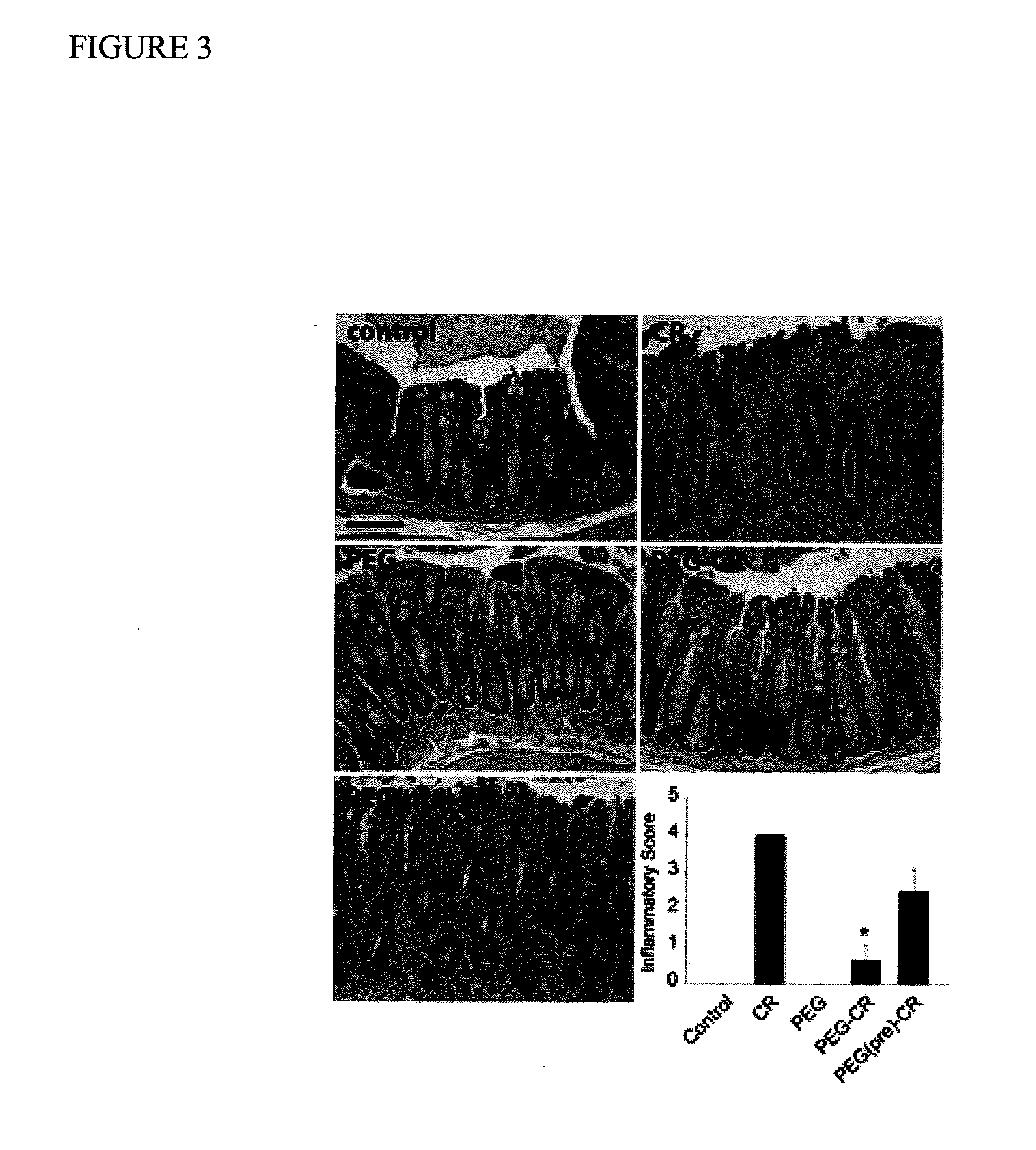Prophylaxis and Treatment of Enteropathogenic Bacterial Infection
- Summary
- Abstract
- Description
- Claims
- Application Information
AI Technical Summary
Benefits of technology
Problems solved by technology
Method used
Image
Examples
example 1
[0070]This example demonstrates that PEG inhibits the attachment of C. rodentium to mouse colonic cells in vitro.
[0071]Mouse colonic CMT-93 cells were incubated with a control solution or a solution of 5% PEG, and then they were infected with C. rodentium either with continuous exposure to PEG (PEG+CR) or after removing PEG and washing (PEG (pre)+CR). After 5 hours of exposure, the groups (Control, PEG(only), CR, PEG+CR, and PEG (pre)+CR) were washed extensively and stained with an immunofluorescent dye specific for bacterial lipopolysaccharide (LPS). Photomicrographs were taken after staining (data not shown). The staining showed that the CR group had the greatest number of bacterial colonies, with the (PEG (pre)+CR) group significantly lower. The PEG+CR group had even less colonies. The number of LPS stained bacterial colonies was recorded in 15 different fields per group (FIG. 1). The presence or pretreatment of the colonic cells with PEG significantly reduced bacterial attachmen...
example 2
[0072]This example demonstrates that PEG inhibits the attachment of C. rodentium to mouse colonic cells in vitro.
[0073]The effects of PEG on the attachment of C. rodentium to the mouse colon was investigated. Five experimental groups were established. A control group with no treatment. A group infected for 2 weeks with C. rodentium (CR) via daily oral gavage. A group treated only with PEG for 1 week (PEG) via daily oral gavage. Another group was infected with C. rodentium for 2 weeks while also receiving concomitant PEG treatment (PEG−CR). And a final group was treated with PEG via daily oral gavage for 1 week, and then infected with C. rodentium for 2 weeks, without further PEG administration (PEG(pre)−CR). The mice were then euthanized the colons were removed, cleaned of stool and washed. Colonic mucosa was scraped, lysed with 1% Triton X® and diluted aliquots were plated on MacConkey agar plates and incubated with 5% CO2 at 37° C. overnight. The numbers of colonies which develope...
example 3
[0074]This example demonstrates that administration of PEG improved clinical signs of C. rodentium infection.
[0075]It is known that C. rodentium infection in mice causes diarrhea that is characterized by the absence of solid stool pellets in the colon. The experiment was designed to determine whether treatment or pretreatment of mice with PEG improved stool formation in the colons of mice infected with C. rodentium. The same five experimental groups of mice were established as in Example 2 above. Control mice and mice treated with PEG only were able to form stool pellets in their colons (FIG. 2A). Mice infected with C. rodentium were unable to form stool pellets. Mice treated or pretreated with PEG and then infected with C. rodentium were also able to form stool pellets. Interestingly, the PEG alone group did not induce diarrhea in this study. In addition, colonic weight was increased by 46±3% in the group infected with C. rodentium alone, but was significantly reduced in the groups...
PUM
| Property | Measurement | Unit |
|---|---|---|
| Time | aaaaa | aaaaa |
| Time | aaaaa | aaaaa |
| Time | aaaaa | aaaaa |
Abstract
Description
Claims
Application Information
 Login to View More
Login to View More - R&D
- Intellectual Property
- Life Sciences
- Materials
- Tech Scout
- Unparalleled Data Quality
- Higher Quality Content
- 60% Fewer Hallucinations
Browse by: Latest US Patents, China's latest patents, Technical Efficacy Thesaurus, Application Domain, Technology Topic, Popular Technical Reports.
© 2025 PatSnap. All rights reserved.Legal|Privacy policy|Modern Slavery Act Transparency Statement|Sitemap|About US| Contact US: help@patsnap.com



